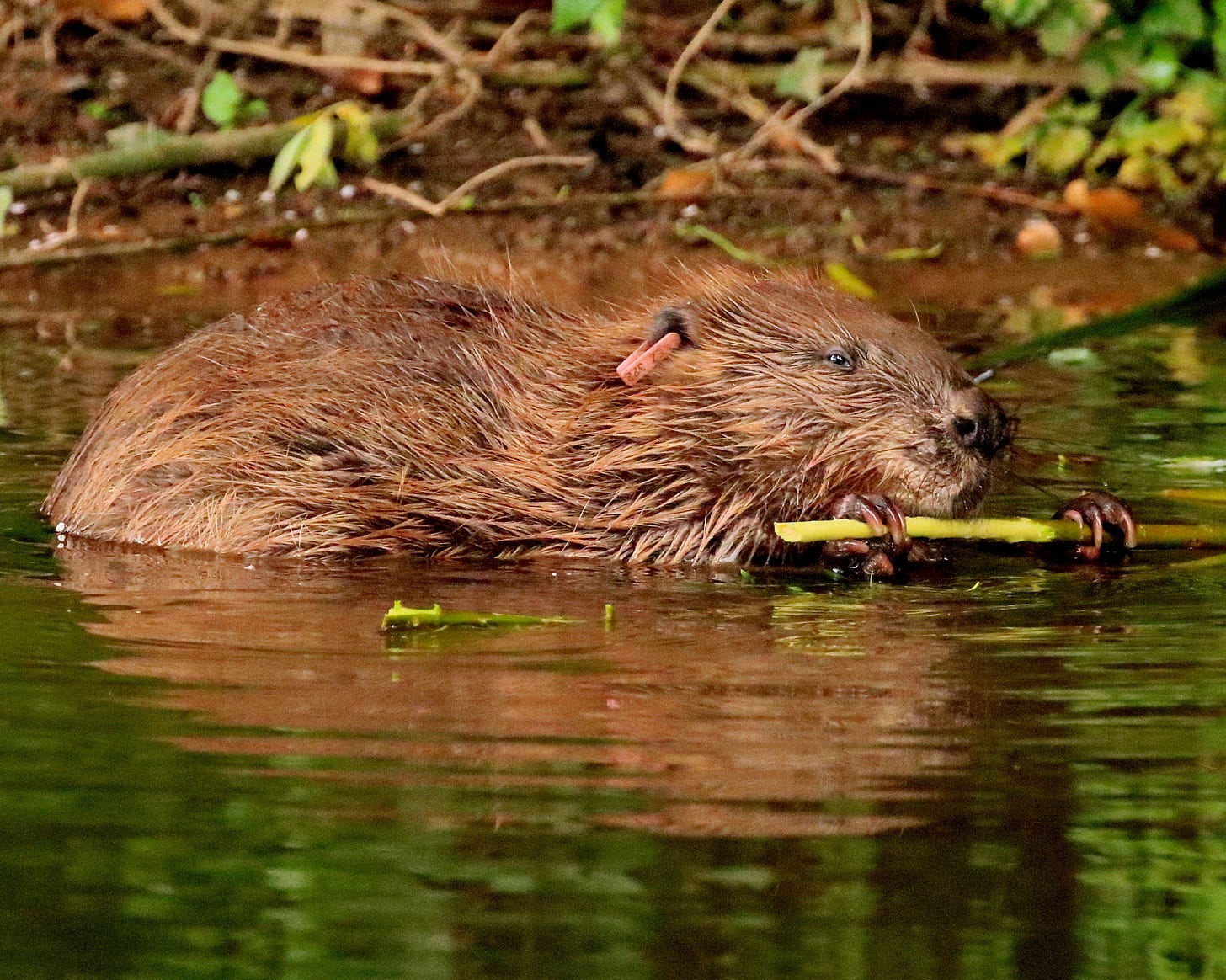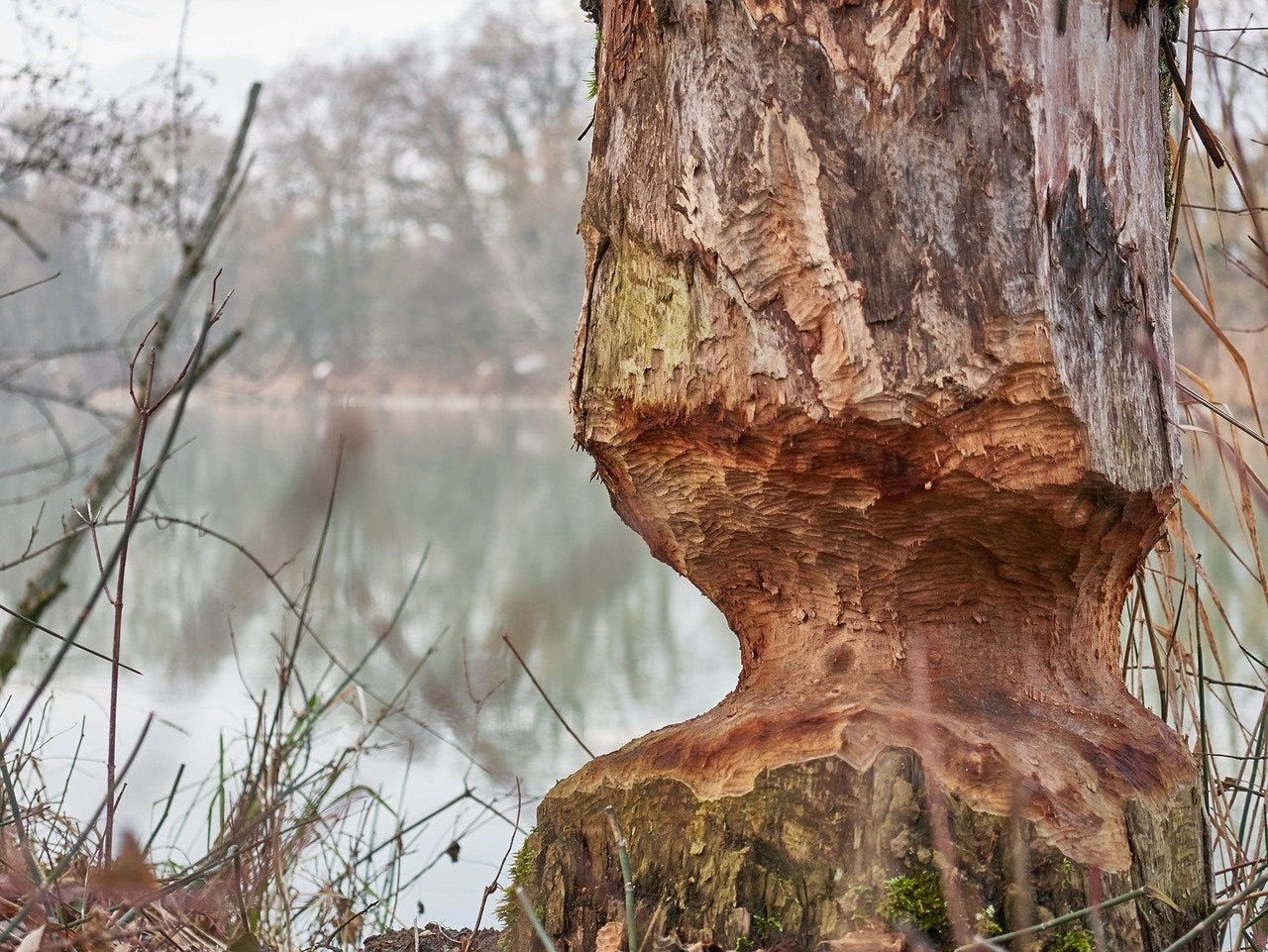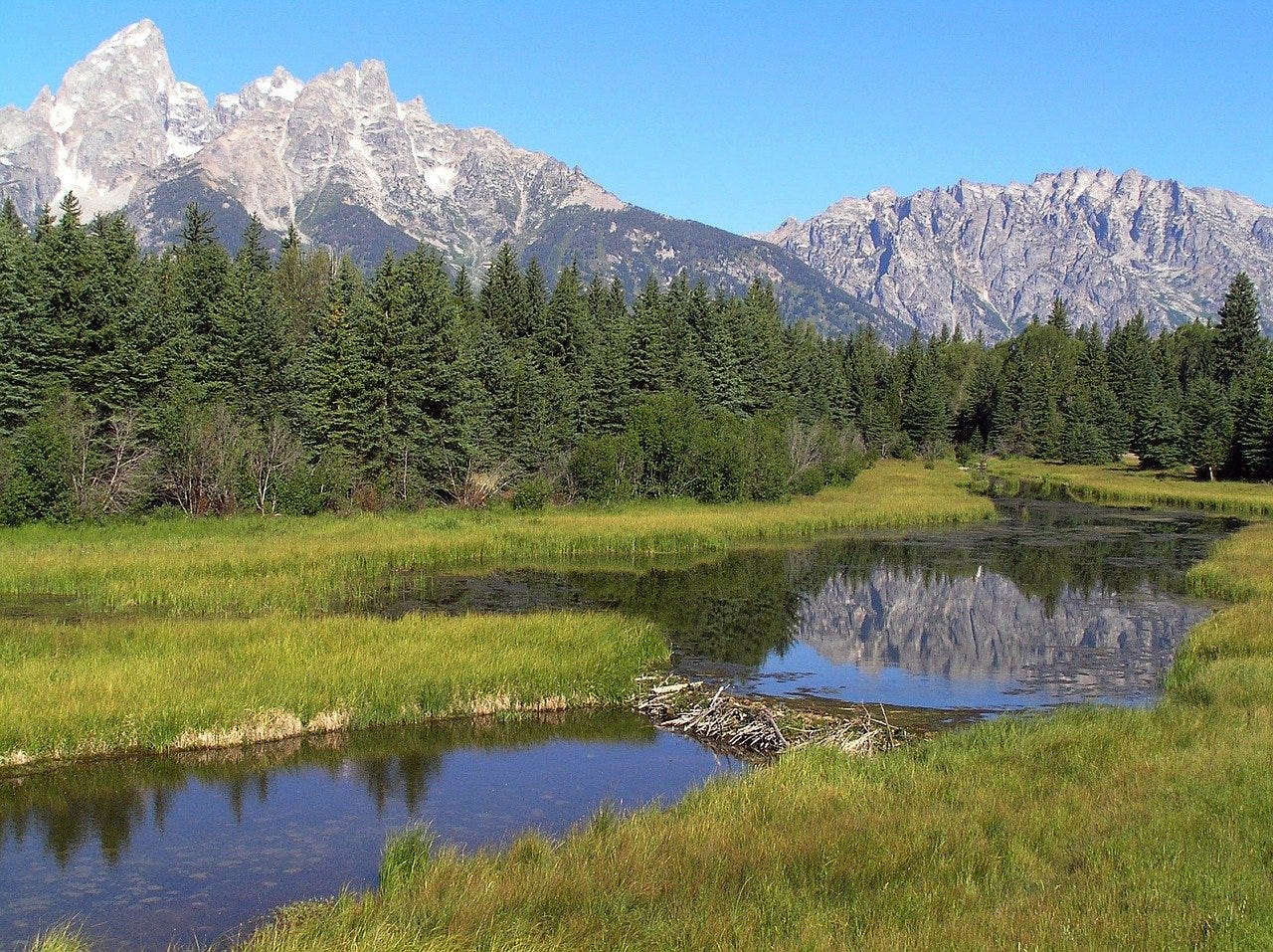What next for England's beavers?
Government approval of Devon's beavers is a boost to reintroduction projects nationally.
Welcome to Inkcap, a newsletter about nature, ecology and conservation in the UK, written and reported by me, Sophie Yeo.

The beavers in the River Otter are here to stay.
A government decision last week means that the five-year reintroduction trial, orchestrated by Devon Wildlife Trust, has been successful. The charismatic mammals, which mysteriously appeared in the river in 2008, are free to roam across England as they please.
It’s a big moment in the story of English wildlife; it is the first time that a native mammal has been intentionally returned to the landscape. Some 400 years after it was hunted to extinction, the beaver is officially back. So what’s the next chapter in the tale?
“It completely changes the context we’re working in,” says Mark Elliott, who led the beaver project at the Devon Wildlife Trust. “Up to now, it’s all been about providing the evidence, and getting that evidence in front of the ministers so they can make the decision. Obviously, now they’ve made that decision, it’s totally different.”
Scientifically, the five-year trial period culminated with the release of a report in February, spelling out the benefits of beavers to people, wildlife, and the countryside. In Devon, the focus will now shift to practicalities,as populations grow and the animals gradually expand beyond the 250 square kilometers of the River Otter catchment into other river systems.
Across the rest of England, there will be renewed attention on those beavers living inside enclosures. These are the most likely candidates for future releases, when and if such moves are sanctioned by the government. Natural England, the responsible agency, has said that it will not license any further releases into the wild until it has consulted on a beaver strategy, which will determine a national approach to reintroductions.

Even then, England’s captive beavers are unlikely to be released all at once. These animals have a transformative effect on the landscape, which can cause conflicts with landowners who fear the loss of agricultural land. Indeed, the recent culling of 87 beavers in Tayside, Scotland, demonstrated the rancour that can occur when local communities are not on board with the presence of this industrious mammal.
“Hopefully, it will be a carefully considered catchment-by-catchment approach. You need to have discussions with the stakeholders before you start opening up the fences,” says Elliott.
While he doesn’t expect the government to fund further reintroductions itself – there is enough enthusiasm for beavers that money can be raised from other sources – Elliott stresses that funding needs to be available for management in the wake of a release, including for people on the ground to help navigate conflicts. “That support for landowners that really does need to come from the government, and that will be critical,” he says.
Ministers are already heading in that direction. The Agriculture Bill currently progressing through parliament could incentivise farmers to welcome beavers onto their land. The new legislation will establish a subsidy system that rewards landowners for providing public goods, including measures to reduce flooding and improve biodiversity. "Farmers could be paid to have them on their land,” said environment minister Rebecca Pow after the government’s decision last week.
The Devon Wildlife Trust has avoided labelling the beaver reintroduction trial as a “rewilding” project, given that its purpose was to prove that people and beavers can coexist even when the land is being farmed, rather than to return the land to a wild and untamed state.

Nonetheless, reintroductions are often seen key to rewilding projects; nationally extinct creatures are often the drivers of dynamic ecosystems. English conservationists are gradually thinking about returning some keystone species to the landscape. When Kent Wildlife Trust recently announced that it would release four bison into an area of fenced woodland, it was widely hailed as an exciting moment for British wildlife, even if it wasn’t true rewilding.
“Even if it is fenced like a South African reserve, the fact we can show our nature-deprived communities animals like bison in a busy landscape like ours can only open the doors of imagination, and pave the way for proper wilding, without fences, in the future,” said Peter Cooper, an ecologist working on species reintroductions in the UK, after the project was announced last month.
Now, for the beavers at least, the fences are down, and there is every chance that this successful effort will help to pave the way towards a more biodiverse and dynamic British landscape. If nothing else, the Devon beavers have shown that reintroductions do not have to be divisive, and that a careful approach can win support from both the public and politicians.
“You can’t approach it in a gung-ho manner. It’s got to be thought through and done in consultation with people, often for the wellbeing of the animals you reintroduce as well,” said Richard Bunting, a spokesperson for Rewilding Britain, which sat on the advisory group for the Devon reintroduction.
“Hopefully the River Otter trial will put wind in the sails of moves to reintroduce native species that should be here. People drove them to extinction and we have a responsibility to bring them back. This is a major step on a journey to help nature get back on its feet.”
Inkcap relies 100% on voluntary donations.
If you value independent environmental journalism, please consider supporting Inkcap by joining up as a paid subscriber by clicking below. (If it takes you to the landing page, simply re-enter your email.)
If you enjoyed this article, please share it around.
Leave a comment, or get in touch by replying to this email.
Image credits: David White, Roy Buri, David Mark



You have missed out a key point about “management of beavers” in that DEFRA Press release. It should ring warning bells because there will be heavy pressure from land interests to identify areas of zero tolerance.
We have little conception of strict protection in the UK, but it is important to consider this in relation to the future of the beaver in not just England but the whole of the UK. The strict protection afforded to a range of species under the Bern Convention and the EU Habitats Directive were measures in pursuit of protecting and thus conserving species on the edge that had dwindled through human persecution. It was also important that if these species reappeared in countries either through voluntary or deliberate reinstatement – both the Bern Convention and the Habitats Directive require consideration of reinstatement for former native species no longer present (see Article 11 in the Bern Convention and Article 22 in the Habitats Directive) - then it was necessary to give that strict protection while they were re-establishing themselves towards effective populations in their former native range. The strict protection has also had the effect of a compulsion on land users to learn to deal with human-wildlife conflicts in constructive ways.
The Wildlife and Countryside Act (WACA) 1981 incorporated our commitments under the Bern Convention into UK legislation, in the same way that the EU Habitats Directive incorporated the Bern Convention into EU legislation. There are so few animals given strict protection under UK legislation, and even then it is by varying degree, such as pine marten, red squirrel, otter, wildcat, dormouse, and now beaver in Scotland (see schedules 5 & 6ZA in the WACA). Of those species, the otter and beaver are given both explicit and spatial strict protection as a result of the EU Habitats Directive, which required us for the spatial protection to identify a network of Special Areas of Conservation (SAC) where the habitat needs of those species must be maintained (Article 6, Annex 2 in Habitats Directive). I am not aware of any assignment of beaver in Scotland to SACs, given that the acceptance of beaver as a free-living species that then qualified it for strict protection was only recent. There are, however, 75 SACs for otter where it is either a primary or qualifying feature, most of which are in Scotland and Wales, and we used to report periodically to the EU on the conservation status of this species. These SACs will continue now as part of a “national site network” under The Conservation of Habitats and Species (Amendment) (EU Exit) Regulations 2019 and will continue to meet the objectives they held under the Habitats Directive. New regulation 7A in that Statutory Instrument may indicate that there will also be a continuation of designation of national sites for ANNEX II species such as the beaver.
I doubt many people here are aware of this spatial aspect to the strict protection of a species, but that is only half the equation. A comparison of the UK distribution of otters with the location of SACs designated for otters shows there are likely to be many otters out of an estimated total population of around 12,000 that are living outside of these protected areas. This doesn’t mean to say that these otter aren’t also covered by strict protection everywhere it chooses to exist, as should be clear from the explicit strict protection given to them under the EU Habitats Directive (see Article 12 & Annex IV in Habitats Directive). The same should be true for beaver, whether in England or Scotland. However, there is a catch because the beaver is not a strictly protected species under the Bern Convention – it is listed in Appendix III rather than Appendix II. Invariably all strict protections are hedged by exceptions (derogations) but those exceptions are not meant to be used for population control, even if some countries abuse them, such as Sweden and the wolf, and it would seem also Scotland and the high number of beavers (~20% of population) killed in less than 12 months. Unfortunately, listing of beaver in Appendix III leaves it open to population control, and thus for arguments to be made for introduction of areas of zero tolerance, as well as having “open seasons”.
Given the vehemence against the EU in our Government, and that it has already switched to conveying the Bern Convention as now being our obligations to wild nature, then this differential in protection will be exploited.